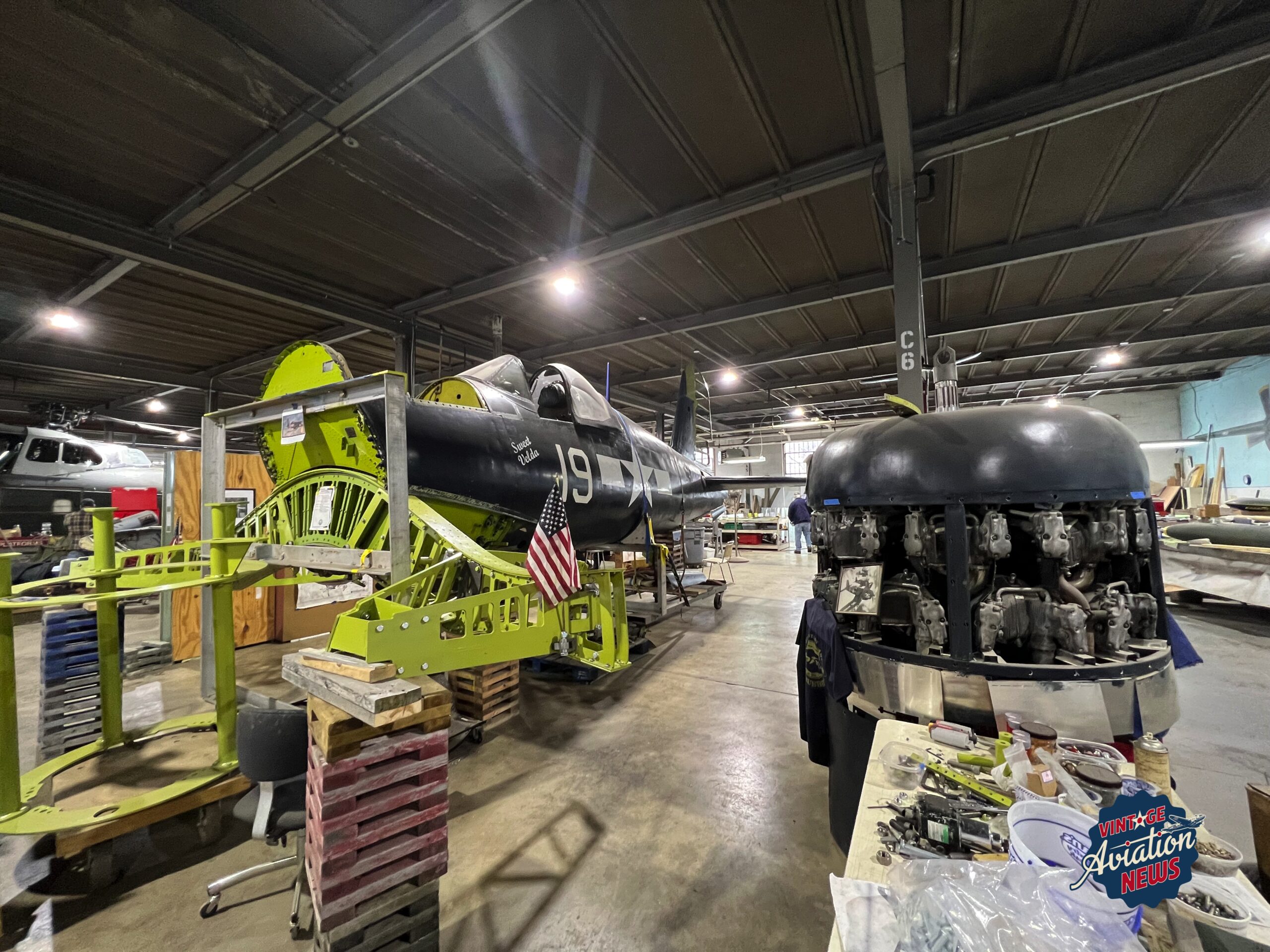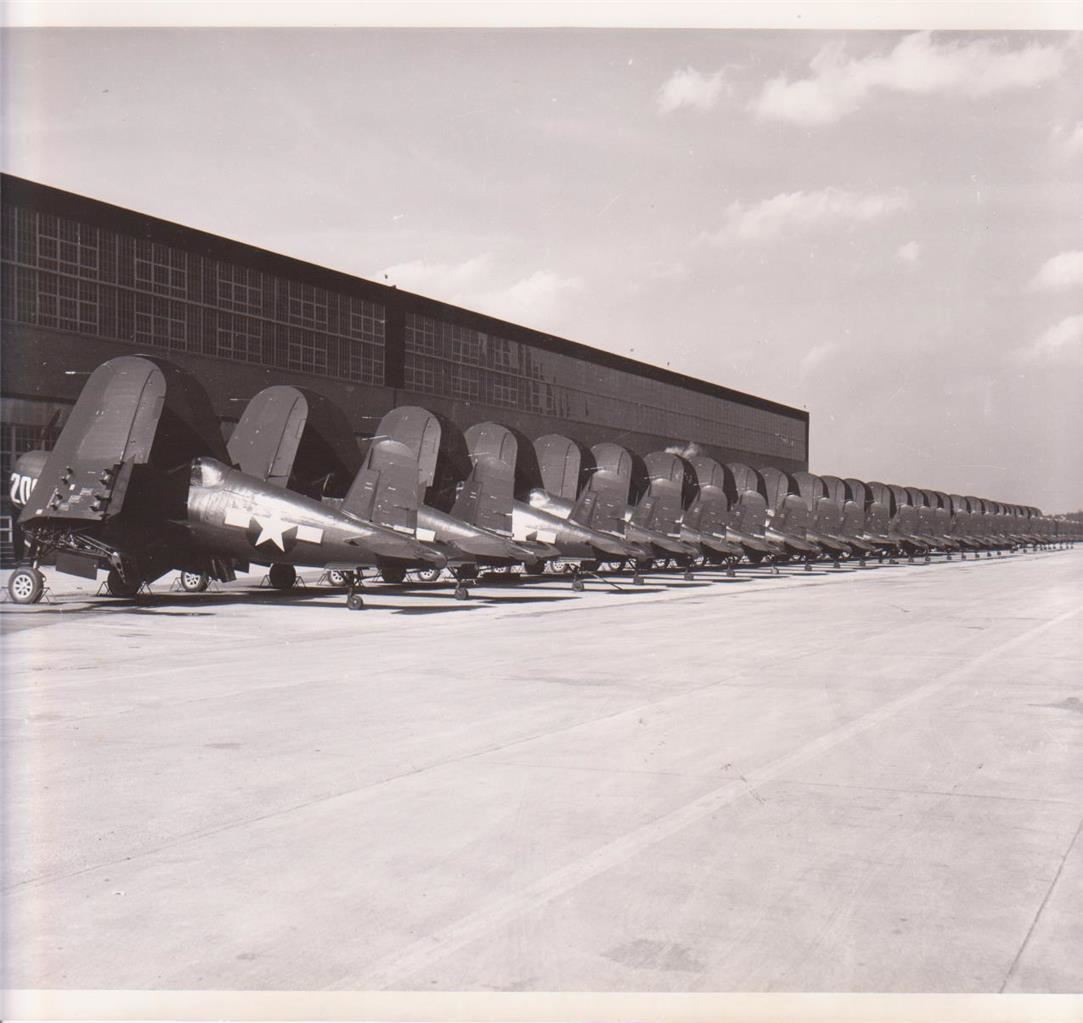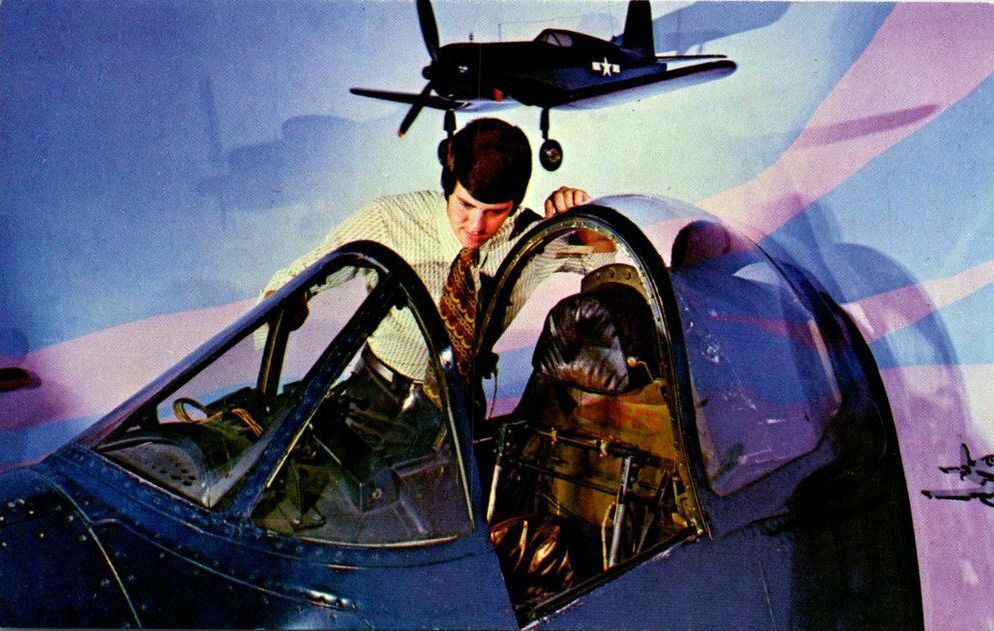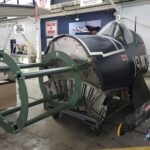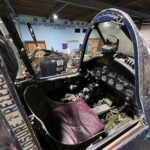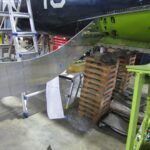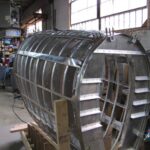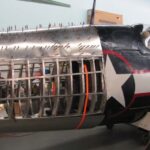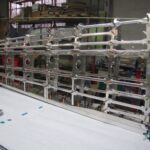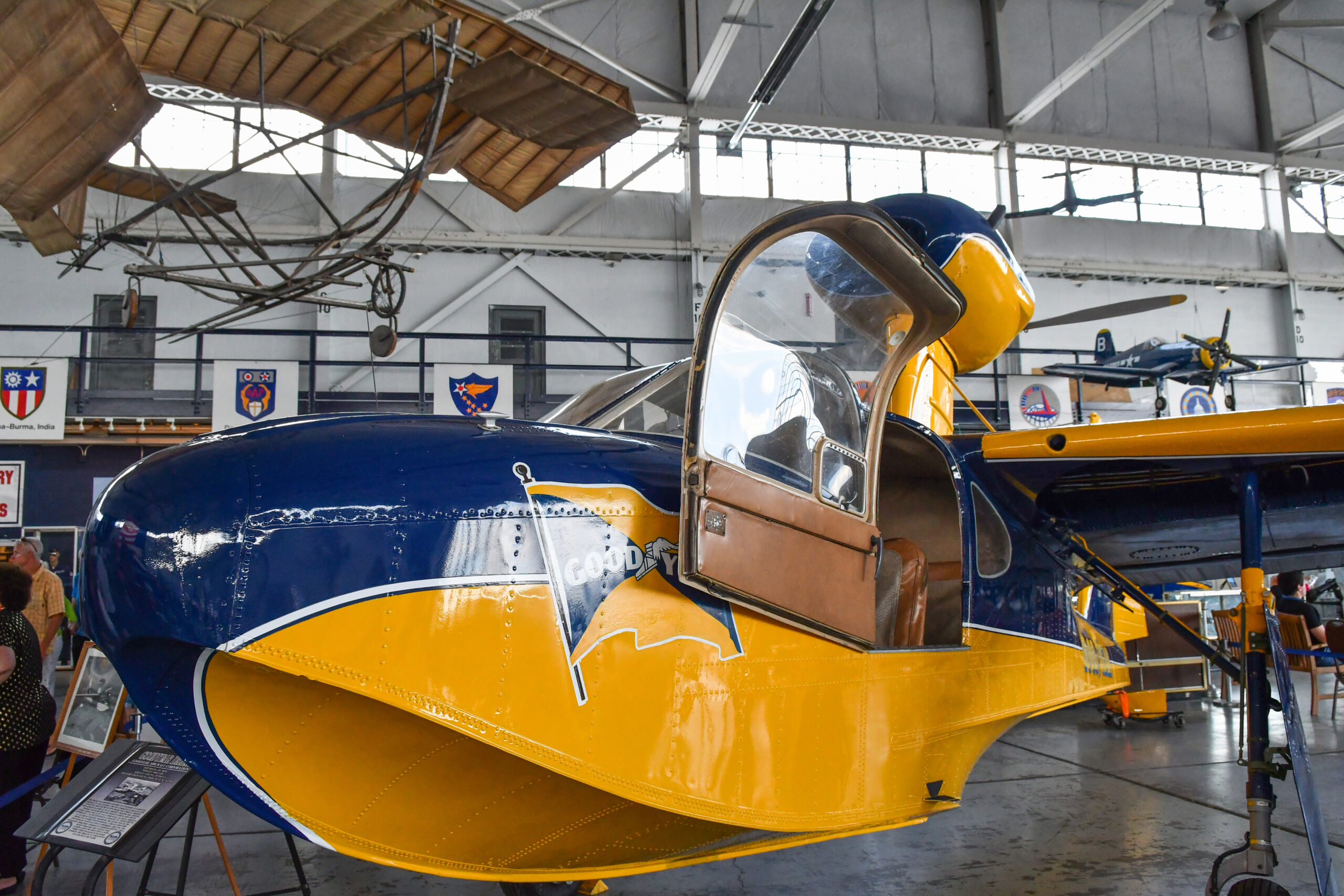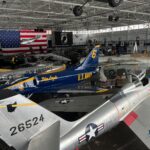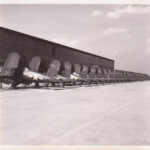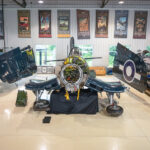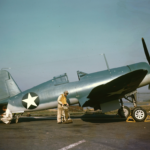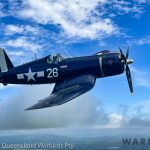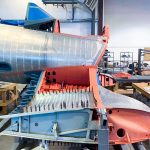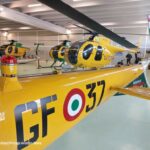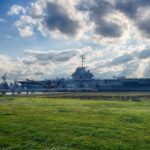Given its proximity to the old Goodyear Aircraft Corporation (GAC) plant in Akron, Ohio, it seems only natural that the MAPS Air Museum in nearby Canton would want to celebrate the aerospace manufacturer’s many contributions to aviation history by having relevant artifacts on display to the public. Other than their numerous lighter-than-air designs, GAC is perhaps best known for the company’s licensed production of Vought-Sikorsky’s most important WWII product, the mighty F4U Corsair.
Goodyear produced roughly 4,000 Corsairs during WWII, in three main variants, the FG-1, FG-1A, and FG-1D, which corresponded more or less to Vought-Sikorsky’s F4U-1, F4U-1A and F4U-1D designs. GAC also built a smattering of more exotic Corsairs such as the FG-3, FG-4 and F2G, although none of these ever entered full-scale production.
Suffice to say, MAPS had long sought a Goodyear-built Corsair for their museum for many years before they finally secured a partial airframe for display, this being what remained of FG-1D BuNo.76671, which had been a part of the Goodyear’s ‘World of Rubber’ museum in Akron for more than half a century until its closure in August 2009. Goodyear manufactured this aircraft in late 1944, with the U.S. Navy accepting it formally on January 7th, 1945. The aircraft made its delivery flight twenty days later, with a short hop to Naval Air Station Columbus (now John Glenn Columbus International Airport) in Columbus, Ohio. The remainder of the aircraft’s brief operational history reads as follows…
- January 1945 – Assigned to Navy Fighter-Bomber Squadron (VBF-92), NAS Groton, Connecticut.
- February 1945 – Performed (CQL) Carrier Qualifications with other pilots/planes on USS Croatan (CVE 25), an escort carrier.
- February 28, 1945 – While performing CQL on USS Croata, piloted by A. H. Untelman, this Corsair experienced a hard landing resulting in substantial structural damage.
- May 31st, 1945 – Struck off Charge (SOC)
- February 1948 – Cockpit section transferred to the Goodyear Tire and Rubber Company Museum, Akron, Ohio.
When MAPS received the Corsair, they initially placed it on display in the condition it had arrived, which was essentially a truncated fuselage extending from the firewall back to midway along the radio compartment; the wings were severed just outboard of the fuselage. Despite these issues, what did remain came in near-time-capsule condition.
About six years ago, MAPS decided to build a full-sized, static replica of the FG-1D, with the original cockpit section at its core. Volunteers, led by Crew Chief Don Neidert, have worked hard to incorporate the original structure sympathetically into this project, which will adhere to the design’s external profile and production breaks. This will provide the museum freedom to choose their own, more economically viable and practical manufacturing methods, while also allowing them to swap out newly-made components if/when original material becomes available at some point in the future. The team has made remarkable progress since the project began, building out the entire rear fuselage, including the empennage, and making good progress on the structure for the wing center section. They are still looking for original Corsair parts to add to the aircraft, of course, especially a set of landing gear to support the airframe, if anyone has a set they can use – regardless of condition.
Earlier this year, Dennis Bachtel, chairman of the MAPS Air Museum’s board, was kind enough to give us a tour of the Corsair project. Our very own Mo Aguiari conducted the interview in the video below, which we feel sure readers will enjoy. Anyone wishing to help contribute to this worthy project, or another effort at the museum, should click HERE to find out how.







